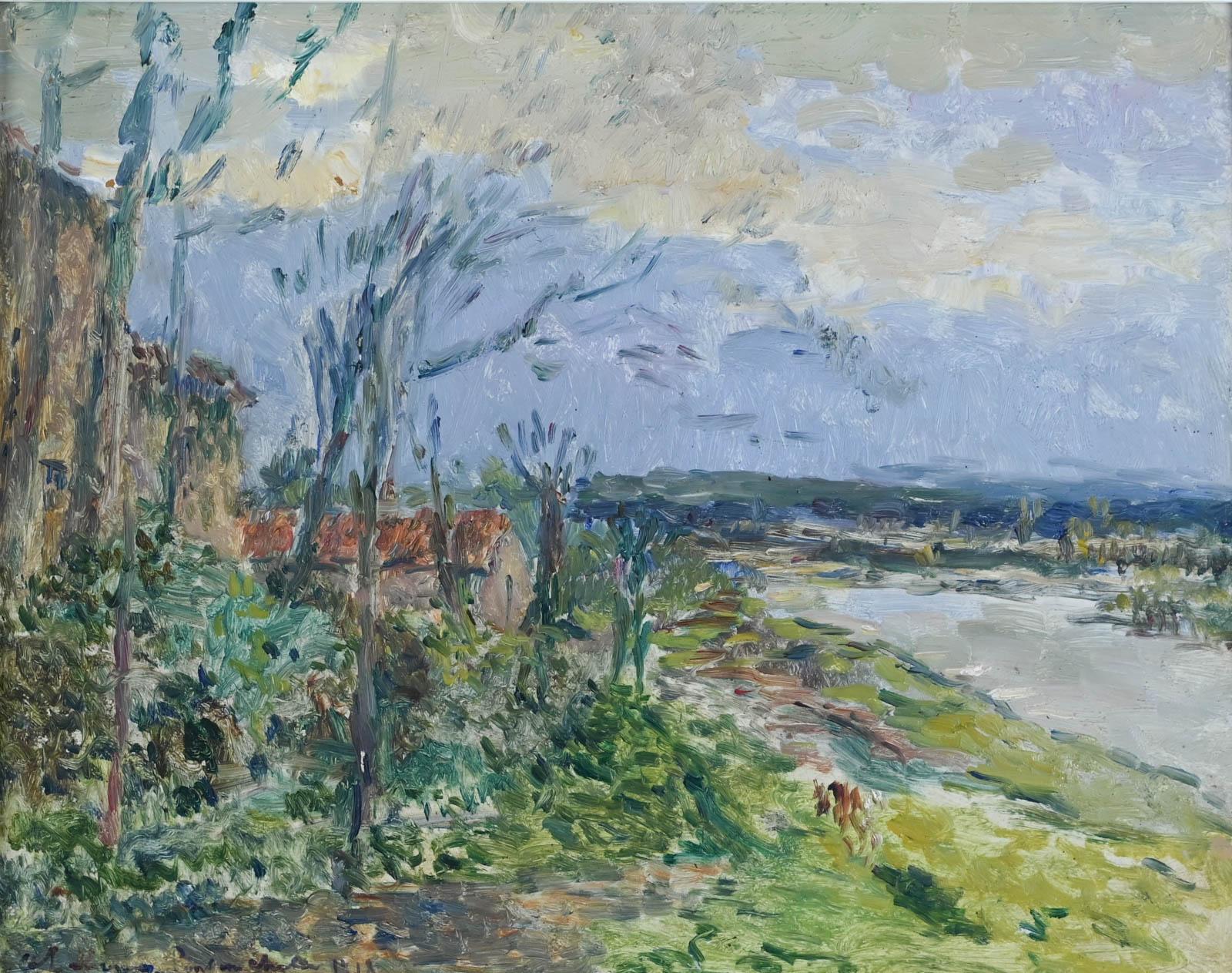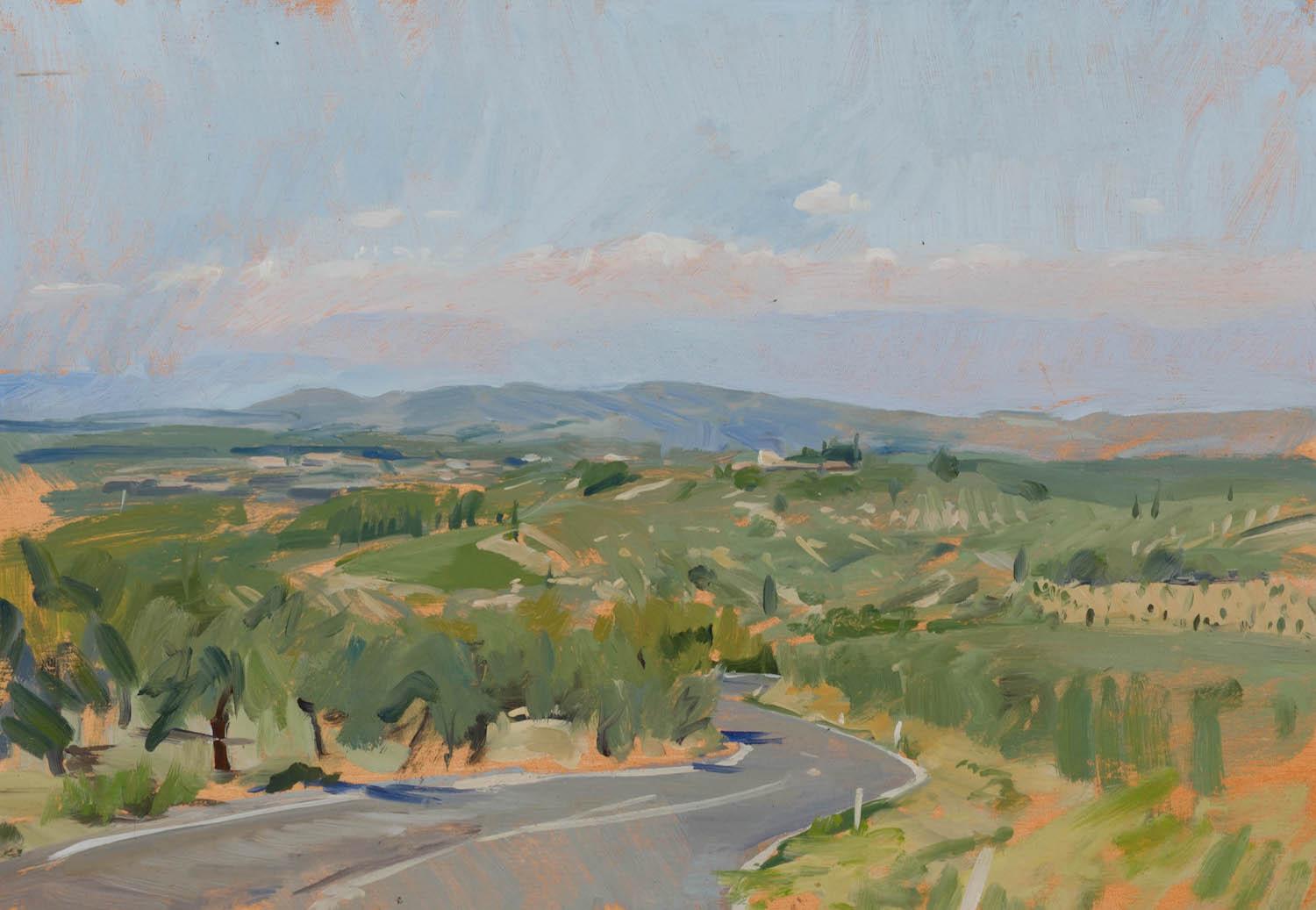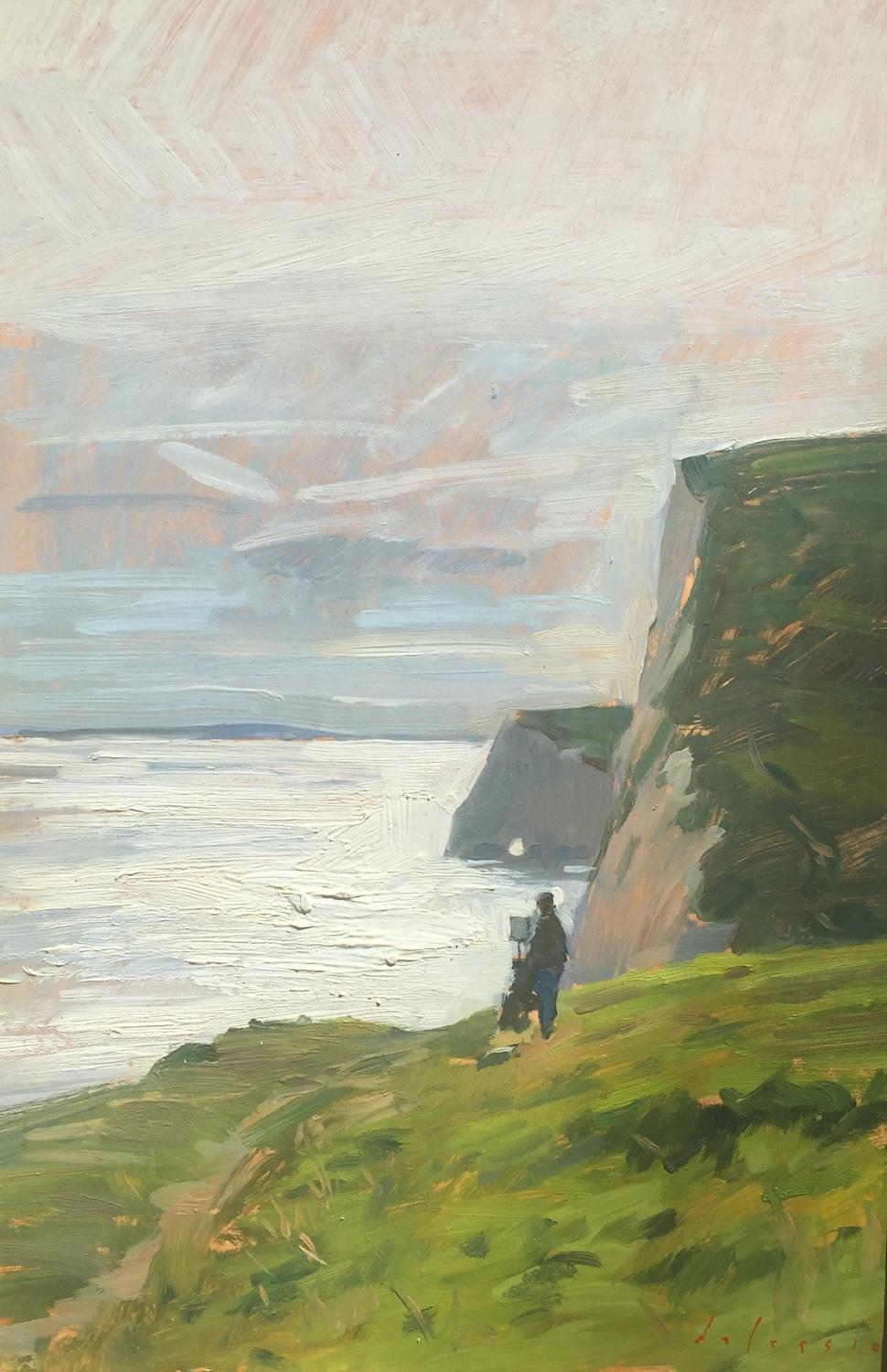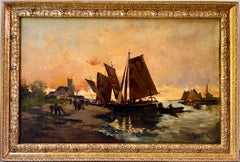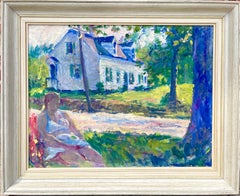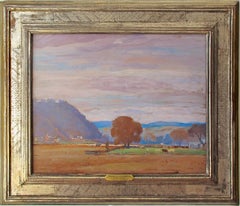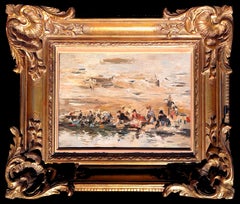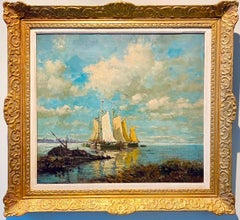
Large French impressionist seascape - Sailing Boats Sea Harbour
View Similar Items
Want more images or videos?
Request additional images or videos from the seller
1 of 19
UnknownLarge French impressionist seascape - Sailing Boats Sea Harbour
About the Item
- Dimensions:Height: 29.53 in (75 cm)Width: 32.29 in (82 cm)
- Medium:
- Movement & Style:
- Period:
- Condition:Lovely and ready to hang. Some light wear to the frame.
- Gallery Location:Antwerp, BE
- Reference Number:1stDibs: LU142329170072
About the Seller
5.0
Platinum Seller
These expertly vetted sellers are 1stDibs' most experienced sellers and are rated highest by our customers.
Established in 2020
1stDibs seller since 2020
348 sales on 1stDibs
Typical response time: 1 hour
More From This SellerView All
- 19th century French painting - Seascape at sunset - Galien LaloueBy Eugene Galien-LaloueLocated in Antwerp, BE19th century French oil painting depicting a seascape at sunset, with fishermen returning home from their day at sea. In the distance we can see people enjoying themselves and walkin...Category
Late 19th Century Impressionist Figurative Paintings
MaterialsCanvas, Oil
- 19th century romantic French painting - View of Venice - Ziem San MarcoLocated in Antwerp, BELovely 19th century romantic cityscape painting of Venice With vibrant colors and swift brushstrokes, the artist of the present painting wonderfully captured a large boat departing ...Category
19th Century Impressionist Figurative Paintings
MaterialsCanvas, Oil
- French Post Impressionist oil - Wauding River Landscape in Long Island - 1940By William MalherbeLocated in Antwerp, BEFrench American post impressionist oil painting depicting "La Chaumine - Wauding river in Long Island" in 1940 William Malherbe was a French Impressionist painter born in 1884. His success came in the 1930’s exhibiting at the gallery Durand Ruel, the famous Paris gallery who’s fortune had been made by backing the Impressionists. Fleeing the Nazi’s in 1939 he immigrated to New York city exhibiting at the Corcoram Gallery in Washington DC. His success was instantaneous and became a highly sought after artist. Our painting is a very beautiful example of this oeuvre during that period. We also have a second work by him from the same period in our other listings. After the war, he returned to France and passed away there in 1955. His works can be found in several museums including the Princeton art...Category
Early 20th Century American Impressionist Landscape Paintings
MaterialsOil, Cardboard
- 19th century romantic painting - Hay Harvest - Meules dans un paysageLocated in Antwerp, BE19th century romantic painting of a hay harvest in the country side by Nikolaus Schmid-Dietenheim This painting wonderfully reflects the tranquility of the countryside and is a beau...Category
19th Century Impressionist Landscape Paintings
MaterialsGlass, Gouache
Sold$1995 bidsNo Reserve - Large 19th century French Barbizon school oil - The outdoor concert - MonticelliLocated in Antwerp, BELarge 19th century Barbizon painting "The outdoor concert" This peaceful and dreamy painting depicts a group of elegantly dressed people in a magnificent park. The painting has wond...Category
19th Century Barbizon School Figurative Paintings
MaterialsOil, Panel
- 19th century painting of a shepherd with his flock of sheep - countryside moonLocated in Antwerp, BERomantic 19th century painting of a shepherd with his flock attributed to Hippolyte Paul Vayson Hippolyte Paul Vayson is a French painter and engraver born on December 4, 1841 in Gordes (Vaucluse) Son of a justice of the peace, Paul Vayson was a student at the Lycée d'Avignon before taking a law degree in Paris to become a lawyer. He was introduced to painting by being a pupil of Charles Gleyre at the Beaux-Arts in Paris, and in the studio of Jules Laurens. His subjects and landscapes mainly illustrate rural Provence. He exhibited in 1865 at the Salon of French Artists, he was awarded a medal at that of 1875 (3rd year of his trip to Algeria) for his painting La Gardeuse de moutons and at that of 1879 (2nd class medal) for Les Moutons, landscape of Provence. That year he had the architect Paul Casimir Fouquiau build a mansion at 13, rue Fortuny in Paris. He has a Parisian workshop at 16, rue de Navarin. He was a member of the jury of the Salon des artistes français (painting section) and promoted to officer of the Legion of Honor in 1886. He married in Lisieux on April 6, 1876 with Clotilde Polin, with whom he had two children. He was elected mayor of Murs (Vaucluse) from 1896, the year of the death of his brother who held this position, until his own death in 1911. A monument was inaugurated in his honor on September 18, 1913, in the Jardin du Rocher des Doms in Avignon, in the presence of Frédéric Mistral. This work by the sculptor Félix Charpentier represents him in bust form...Category
19th Century Romantic Animal Paintings
MaterialsPanel, Oil
You May Also Like
- "Up the Valley"By Daniel GarberLocated in Lambertville, NJIn an original Harer frame. Illustrated in "Daniel Garber Catalogue Raisonne" Vol. II, pg. 271, and in book titled "Blue Chips", pg. 33 Jim’s of Lambertville is proud to offer this artwork by: Daniel Garber (1880-1958) One of the two most important and, so far, the most valuable of the New Hope School Painters, Daniel Garber was born on April 11, 1880, in North Manchester, Indiana. At the age of seventeen, he studied at the Art Academy of Cincinnati with Vincent Nowottny. Moving to Philadelphia in 1899, he first attended classes at the "Darby School," near Fort Washington; a summer school run by Academy instructors Anshutz and Breckenridge. Later that year, he enrolled at the Pennsylvania Academy of the Fine Arts. His instructors at the Academy included Thomas Anshutz, William Merritt Chase and Cecilia Beaux. There Garber met fellow artist Mary Franklin while she was posing as a model for the portrait class of Hugh Breckenridge. After a two year courtship, Garber married Mary Franklin on June 21, 1901. In May 1905, Garber was awarded the William Emlen Cresson Scholarship from the Pennsylvania Academy, which enabled him to spend two years for independent studies in England, Italy and France. He painted frequently while in Europe, creating a powerful body of colorful impressionist landscapes depicting various rural villages and farms scenes; exhibiting several of these works in the Paris Salon. Upon his return, Garber began to teach Life and Antique Drawing classes at the Philadelphia School of Design for Women in 1907. In the summer of that same year, Garber and family settled in Lumbertville, Pennsylvania, a small town just north of New Hope. Their new home would come to be known as the "Cuttalossa," named after the creek which occupied part of the land. The family would divide the year, living six months in Philadelphia at the Green Street townhouse while he taught, and the rest of the time in Lambertville. Soon Garber’s career would take off as he began to receive a multitude of prestigious awards for his masterful Pennsylvania landscapes. During the fall of 1909, he was offered a position to teach at the Pennsylvania Academy as an assistant to Thomas Anshutz. Garber became an important instructor at the Academy, where he taught for forty-one years. Daniel Garber painted masterful landscapes depicting the Pennsylvania and New Jersey countryside surrounding New Hope. Unlike his contemporary, Edward Redfield, Garber painted with a delicate technique using a thin application of paint. His paintings are filled with color and light projecting a feeling of endless depth. Although Like Redfield, Garber painted large exhibition size canvases with the intent of winning medals, and was extremely successful doing so, he was also very adept at painting small gem like paintings. He was also a fine draftsman creating a relatively large body of works on paper, mostly in charcoal, and a rare few works in pastel. Another of Garber’s many talents was etching. He created a series of approximately fifty different scenes, most of which are run in editions of fifty or less etchings per plate. Throughout his distinguished career, Daniel Garber was awarded some of the highest honors bestowed upon an American artist. Some of his accolades include the First Hallgarten Prize from the National Academy in 1909, the Bronze Medal at the International Exposition in Buenos Aires in 1910, the Walter Lippincott Prize from the Pennsylvania Academy and the Potter Gold Medal at the Art Institute of Chicago in 1911, the Second Clark Prize and the Silver Medal from the Corcoran Gallery of Art for “Wilderness” in 1912, the Gold Medal from the Panama-Pacific Exposition in San Francisco of 1915, the Second Altman Prize in1915, the Shaw prize in 1916, the First Altman Prize in 1917, the Edward Stotesbury Prize in1918, the Temple Gold Medal, in 1919, the First William A...Category
1940s American Impressionist Landscape Paintings
MaterialsOil, Panel
- Washers on the banks of La TouquesBy Eugène Louis BoudinLocated in Belgravia, London, London'Washers on the banks of La Touques' By Eugène BOUDIN (French 1824-1898) Oil on panel: 12 x 16.25 inches Framed size: 15.25 x 19 inches On the reverse of the frame: Old label beari...Category
20th Century Impressionist Landscape Paintings
MaterialsOil, Panel
- Pont du ChâteauBy Albert LebourgLocated in LE HAVRE, FRAlbert LEBOURG (1849-1928) Pont du Château, 1918 Oil on panel Size : 33 x 42 cm Signed and dated 1918 lower left. Origin : - Galerie Tuffier, Les Andelys, - Private collection, Pa...Category
1910s Impressionist Landscape Paintings
MaterialsOil, Panel
- AfterglowBy Amy SidraneLocated in Pasadena, CAProvenance Acquired by the gallery directly from the artist Artist Statement "The effect from the afterglow resulted in a play of complementary colors ~ enhancing the mood." —Amy Si...Category
2010s Impressionist Landscape Paintings
MaterialsOil, Panel, Canvas
- Brooklyn BridgeBy Nelson WhiteLocated in Sag Harbor, NYOil Painting of the Brooklyn Bridge, painted en plein air. A sailboat sails underneath. Painted in a thick, impressionist style. Painting dimensions: 4 x 11 inches Framed dimensions: 9 x 16 inches Framed in a handmade, Italian, custom gold leaf frame. Nelson H. White was born in New London, Connecticut in 1932. White has been surrounded by art and artists from the time he was born. He received his earliest art instruction from his grandfather, Henry Cooke White (1861-1952) and his father Nelson Cooke White (1900-1989), both important American artists. The family lived in Waterford, Connecticut and the elder White had been an early member of the art colony in Old Lyme, Connecticut. Known for his paintings of the Connecticut landscape and shoreline, Henry Cooke White became a teacher to his son, Nelson Cooke White. Living with his parents at the Florence Griswold house in Old Lyme, he met some of the most important and influential artists of the day, Childe Hassam, Will Howe Foote and Harry Hoffman. Later, Nelson White's father began to take his family to summer on Shelter Island and became friendly with many of the artists of the Peconic colony such as Irving Wiles, an important American impressionist. After graduating from the Tabor Academy in Marion, Massachusetts in 1951, Nelson H. White began to study at Mitchell College in Connecticut but left to pursue studies in the violin, musical theory and composition. At this time, he began to spend more time studying art with his father and grandfather. By 1955, Nelson H. White had decided to devote himself to a career as a painter and traveled to Florence, Italy to become an apprentice to Pietro Annigoni, the world-renowned Florentine master. Within two years, the young White had won two awards for his work. While in Florence he also studied with the great Italian teacher, Nerina Simi. Today, White divides his time between the United States and Florence. White is still actively involved with studies at The Florence Academy of Art in Florence, Italy. Although he has received instruction from some very important artists, White's work is highly individual. He paints with great spirit. Upon seeing his work one quickly senses White’s great love for nature and the outdoors. Through his eyes we are able to view and interpret nature in an intimate manner. Whether Nelson H. White is painting the Connecticut shore, a beach in Italy, a pond on Shelter Island or the hills of Vermont, he allows the observer to view a soft, yet dramatic side of nature. His ability to use color, coupled with rich brush work and a graduation of light, air and atmosphere allows one to enjoy a certain mood which is clearly conveyed in White's paintings. It is a mood that leaves us with a lasting impression. White has shown his work in numerous galleries across the globe since the 1950s, from the United States all the way to Italy and Russia. White's first museum restrospective was in the New Britain Museum of American Art in July 2012. His work can be found in many private and public collections, as well as several museums. Art Education 1999- present The Florence Academy of Art, Florence, Italy 1956-1987 Student of Ms. Nerina Simi, Florence Italy 1955-1980 Apprentice to Pietro Annigoni, Florence, Italy abd studied watercolor painting with Ogden Pleissner...Category
21st Century and Contemporary American Impressionist Landscape Paintings
MaterialsOil, Panel
- Ditch Plains LifeguardBy Marc DalessioLocated in Sag Harbor, NYPainted en plein air, on the beach (Ditch Plains) in Montauk, New York. Dalessio captures this picturesque & popular Hamptons beach. A lifeguard stand is ...Category
21st Century and Contemporary American Impressionist Landscape Paintings
MaterialsPanel, Oil


